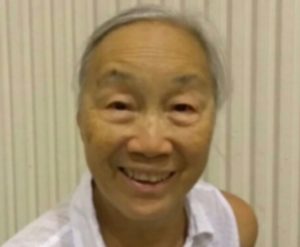The goal of preschool in the Hawaii Department of Education’s elementary schools is welcome news.
The first years of a child’s life are so important, as 85 percent to 90 percent of their brains develop before age 5. Preschool for every child in the DOE is our opportunity to give all of Hawaii’s children a good education.
The importance of preschools cannot be underestimated — and every child should have access to quality preschool. But it’s troubling that studies showed advantages conferred by preschools separate from elementary schools fade with time.
As children grow, changing to another grade means changing to another teacher, sometimes another school.В The children must get to know and bond with a new teacher and different classmates, get used to another environment.

By contrast, preschools following the PK-3 (Prekindergarten-to-Third-Grade) model — similar to Montessori’s and others’ — build skills over time. PK-3 uses the skills of teachers more efficiently and teaching becomes more effective.
New Jersey implemented PK-3 in Camden’s poverty stricken, crime-ridden ghettos to boost their children’s education with Head Start’s PK-3 program. Follow-up studies measured Camden’s PK-3 students’ math and reading scores — two skills upon which all future learning depend. Children from impoverished, traumatizing ghettos performed on par with the general population, sometimes better.
Bonds Formed
In a PK-3 program, every child stays with the same teacher, same classmates, preschool through third grade. They bond — knowing each other well — the teacher, the children, and families become ohana over the six years together.
The child feels secure and nurtured in school. The teacher learns every child’s strengths, helps them develop and strengthen them — knows their weaknesses, helping the child overcome them.
Since teachers often teach different grades from year to year, leading a class through several successive grades —as they do in Montessori — isn’t difficult. Merging preschool with elementary, teachers first meet children when they’re excited to come to school, and can build on that auspicious beginning. Adjustments will need to be made at the DOE however.
Preschool is a fantastic, specialized area to work in. Preschoolers experiment and try everything, learning through experience and play. Nurturing young preschoolers to be the best person they can be is so rewarding — they are so open to guidance. Guiding and nurturing children is such an important, fulfilling part of the preschool teachers’ teaching style.
Preschool is a fantastic, specialized area to work in.
I remember my timid little preschooler who ran away from everything — it was just her personality. But she was able to absorb and learn different ways of interacting. She learned, for instance, to tell classmates, “I don’t like that. Please stop.” The next year, she was a confident, joyful kindergartener.
Around the age 6 or 7, children begin to want to do things “the way everyone else does.” Building on learning-through-play, they begin to learn through more “formal” instruction. Teachers are keenly aware of the importance of age appropriateness at each age level, working easily through the transition between the age groups.
There must be a seamless flow between preschool and elementary, and the strength of PK-3 is that preschool is part of the DOE. How can the DOE incorporate the Executive Office on Early Learning and collaborate with them in the children’s best interest? The role of EOEL in the PK-3 paradigm is extremely important for the success of maximizing the promise of integrating preschool and elementary — and as the Montessori schools show, extremely rewarding.
I hope the Ige administration looks at implementing PK-3 in the DOE, given its success elsewhere.В Perhaps a pilot program on the Waianae Coast which already has two public preschools? It could be a step toward erasing inequities that have plagued Hawaii.
 GET IN-DEPTH
REPORTING ON HAWAII’S BIGGEST ISSUES
GET IN-DEPTH
REPORTING ON HAWAII’S BIGGEST ISSUES
Community Voices aims to encourage broad discussion on many topics of community interest. It’s kind of a cross between Letters to the Editor and op-eds. This is your space to talk about important issues or interesting people who are making a difference in our world. Column lengths should be no more than 800 words and we need a current photo of the author and a bio. We welcome video commentary and other multimedia formats. Send to news@civilbeat.org. The opinions and information expressed in Community Voices are solely those of the authors and not Civil Beat.
We need your help.
Unfortunately, being named aВ finalist for aВ Pulitzer prizeВ doesn’t make us immune to financial pressures. The fact is,В our revenue hasn’t kept pace with our need to grow,Мэ.
Civil Beat is a nonprofit, reader-supported newsroom based in ±бІ№·ЙІ№ѕ±К»ѕ±. We’re looking to build a more resilient, diverse and deeply impactful media landscape, andВ we hope you’ll help by .



